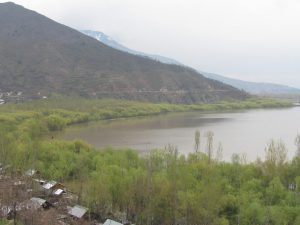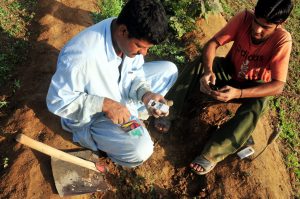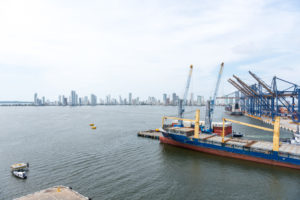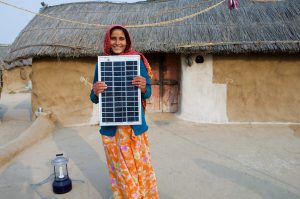Much of Asia may see 50% more rainfall due to climate change, although countries like Pakistan and Afghanistan may experience a decline in rainfall by 20-50%, says a new report by the Asian Development Bank (ADB) and the Potsdam Institute for Climate Impact Research.
The increase in rainfall is not necessarily good news either, because the Intergovernmental Panel on Climate Change has forecast fewer rainy days, but more intense rainfall on those days. This means more flooding, and less rainwater getting the chance to percolate underground to recharge aquifers.
And there will probably be more intense typhoons and cyclones as global temperatures go up, says the ADB report, called A Region at Risk: The Human Dimensions of Climate Change in Asia and the Pacific.
Coastal and low-lying areas in Asia will be at an increased risk of flooding. Nineteen of the 25 cities most exposed to a one-metre sea-level rise are in Asia, seven in the Philippines alone. Indonesia will be the country worst hit by coastal flooding, with approximately 5.9 million people affected every year until 2100.
All this will have serious economic consequences. Global flood losses are expected to increase to USD 52 billion per year by 2050 from USD 6 billion in 2005. Moreover, 13 of the top 20 cities with the largest growth of annual flood losses from 2005-2050 are in Asia and the Pacific: Mumbai, Chennai, Surat, and Kolkata (India); Guangzhou, Shenzhen, Tianjin, Zhanjiang, and Xiamen (China); Ho Chi Minh City (Viet Nam); Jakarta (Indonesia); Bangkok (Thailand); and Nagoya (Japan).
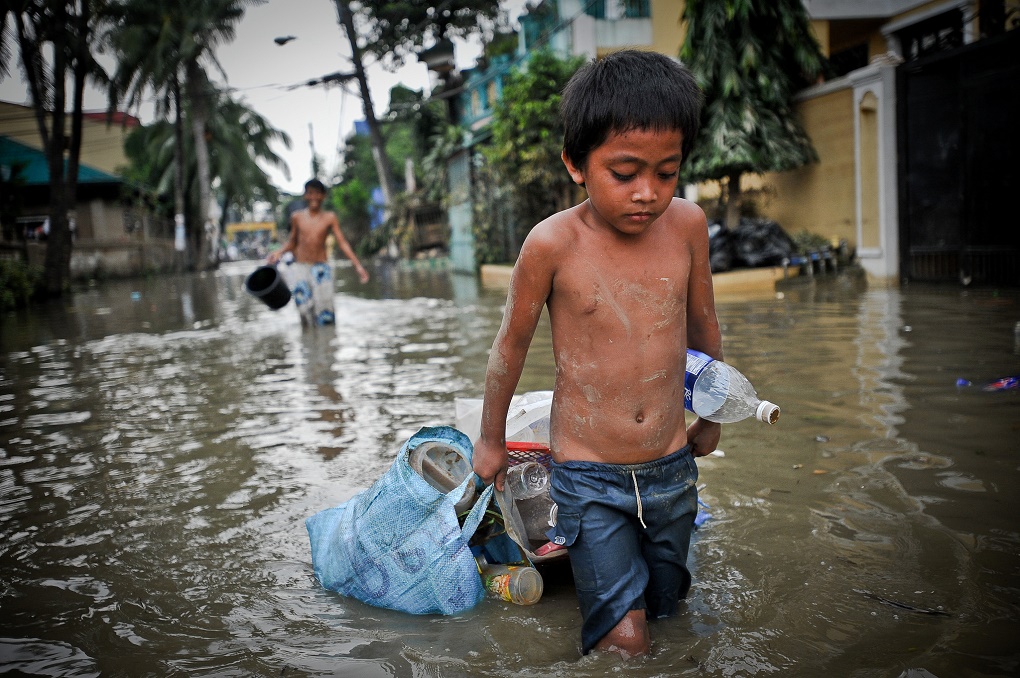
Food risk
Climate change will also make food production in the region more difficult and production costs higher. In some countries of Southeast Asia, rice yields could decline by up to 50% by 2100 if no adaptation efforts are made. Meanwhile, in Central Asia, almost all crop yields in Uzbekistan are projected to decrease by 20-50% by 2050 even in a two-degree Celsius temperature increase scenario.
Food shortages could increase the number of malnourished children in South Asia by seven million, as import costs will probably increase to USD 15 billion per year by 2050, compared to USD 2 billion now.
Marine ecosystems, particularly in the Western Pacific, will be in serious danger by 2100. All coral reef systems in the region will collapse due to mass coral bleaching if global warming proceeds as per the business-as-usual scenario. The Paris Agreement aims to hold this rise down to 1.5 degrees Celsius, but even in that situation 89% of coral reefs are expected to suffer from serious bleaching, severely affecting reef-related fisheries and tourism.
Health risk
Climate change also poses a significant risk to health in Asia and the Pacific. Already, 3.3 million people die every year due to the harmful effects of outdoor air pollution, with China, India, Pakistan, and Bangladesh being the top four countries experiencing such deaths. In addition, heat-related deaths in the region among the elderly are expected to increase by about 52,000 cases by 2050 due to climate change, according to data from the World Health Organisation.
Under a business-as-usual scenario, a six-degree Celsius temperature increase is projected over the entire Asian landmass by the end of the century. Some countries in the region could experience significantly hotter climates, with temperature increases in Tajikistan, Afghanistan, Pakistan, and the northwest part of China projected to become eight degrees hotter than they were at the start of the Industrial Age.
A business-as-usual approach could also disrupt functioning ecosystem services, prompting mass migration — mostly to urban areas — that could make cities more crowded and overwhelm available social services. Deaths related to vector-borne diseases such as malaria and dengue may also increase.
Energy risk
A warmer climate could also endanger energy supply in Asia. Climate change can exacerbate energy insecurity through continued reliance on unsustainable fossil fuels, reduced capacities of thermal power plants due to a scarcity of cooling water, and intermittent performance of hydropower plants due uncertain water discharges, among other factors. Energy insecurity could lead to conflicts as countries compete for limited energy supply.
Minimising impact
To mitigate the impact of climate change, the report highlights the importance of implementing the commitments laid out in the Paris Agreement. These include public and private investments focused on the rapid decarbonisation of the Asian economy as well as the implementation of adaptation measures to protect the region’s most vulnerable populations.
Climate mitigation and adaptation efforts should also be mainstreamed into macro-level regional development strategies and micro-level project planning in all sectors, in addition to the ongoing renewable energy and technology innovation efforts in urban infrastructure and transport. The region has both the capacity and influence to move towards sustainable development pathwayscurb global emissions, and promote adaptation, the report concludes.
At the launch of the report, Hans Joachim Schellnhuber, Director of the Potsdam Institute, said, “The Asian countries hold Earth’s future in their hands. If they choose to protect themselves against dangerous climate change, they will help to save the entire planet. The challenge is twofold. On the one hand, Asian greenhouse-gas emissions have to be reduced in a way that the global community can limit planetary warming to well below two degrees Celsius, as agreed in Paris 2015. Yet even adapting to 1.5 degrees Celsius temperature rise is a major task. So, on the other hand, Asian countries have to find strategies for ensuring prosperity and security under unavoidable climate change within a healthy global development.”
Looking at the bright side, Schellnhuber added, “Leading the clean industrial revolution will provide Asia with unprecedented economic opportunities. And exploring the best strategies to absorb the shocks of environmental change will make Asia a crucial actor in 21st-century multilateralism.”
![<p>Water being distributed to displaced people taking refuge at the Makli Graveyard, Thatta, Pakistan [image courtesy: ADB]</p>](https://dialogue.earth/content/uploads/2017/07/Climate-change-south-asia.jpg)

